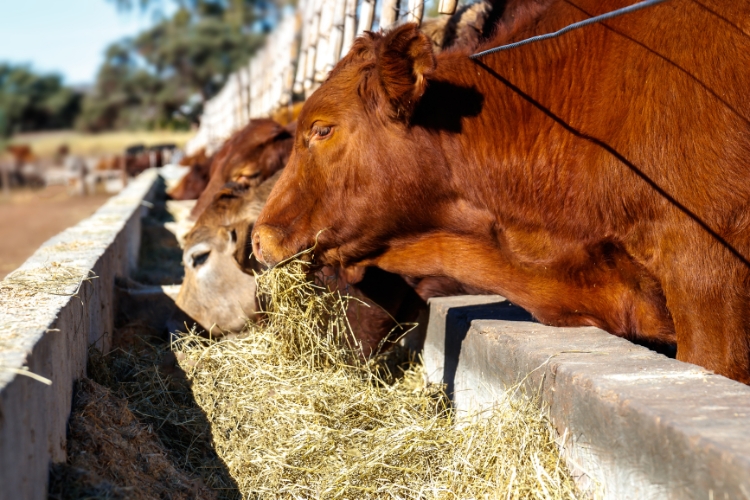Raising healthy, productive beef cattle requires providing them with a balanced, nutrient-rich diet that meets their specific nutritional needs.
The right feed not only supports optimal growth and weight gain but also contributes to the overall well-being and quality of the cattle.
In this blog post guide, we’ll explore the various factors to consider when selecting the best food for beef cattle and discuss the most suitable options.
Understanding Cattle Nutrition
Before delving into the specifics of cattle feed, it’s essential to understand the fundamentals of cattle nutrition. Cattle are ruminant animals, meaning they have a unique digestive system that allows them to break down and extract nutrients from plant-based materials, including grasses, hay, and grains.
Cattle have four distinct compartments in their stomachs, and the rumen is the largest and most important one. The rumen is home to billions of microorganisms that aid in the digestion process, breaking down complex carbohydrates, proteins, and fiber.
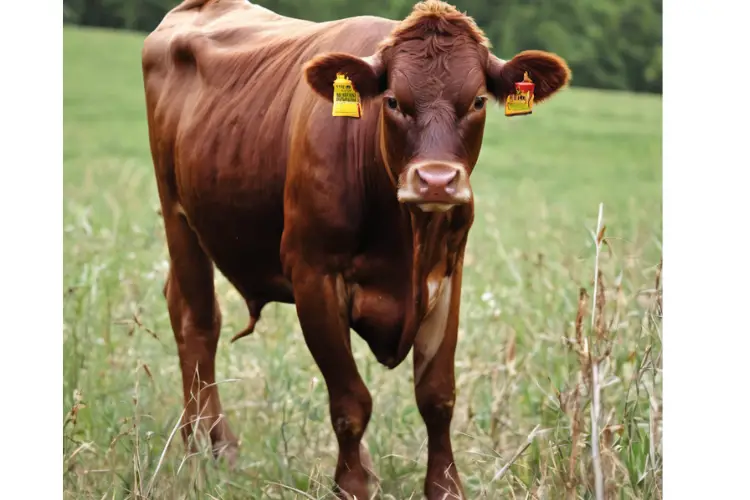
The primary nutritional requirements for beef cattle include:
- Energy: Cattle require energy for maintenance, growth, and production. Sources of energy include carbohydrates, fats, and proteins.
- Protein: Protein is essential for muscle growth, tissue repair, and the production of enzymes and hormones. Cattle can obtain protein from both plant and animal sources.
- Fiber: Ruminants rely on fiber for proper rumen function and digestion. Fiber sources include forages, such as hay and pasture grass.
- Minerals and Vitamins: Cattle require a balanced intake of macro and micro minerals, as well as fat-soluble and water-soluble vitamins for various bodily functions.
- Water: Access to clean, fresh water is crucial for cattle to maintain proper hydration and support their overall health.
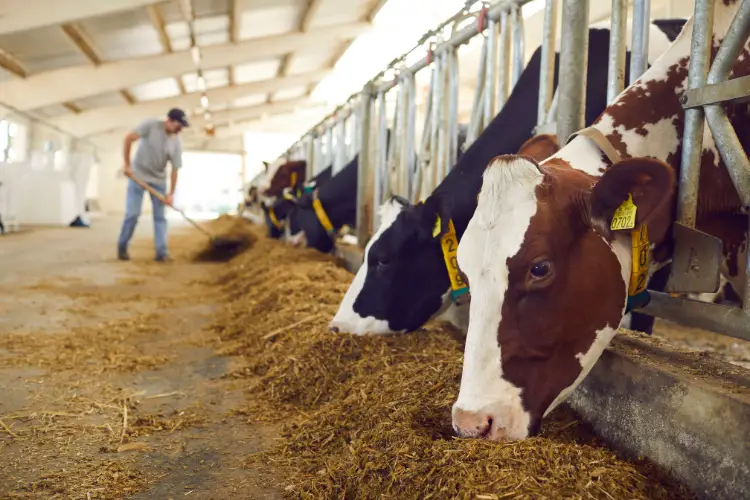
Factors to Consider When Selecting Cattle Feed
When choosing the best feed for beef cattle, several factors should be taken into consideration:
- Life Stage: The nutritional requirements of cattle vary depending on their life stage, such as calves, growing heifers, bulls, or lactating cows. Each stage has specific energy, protein, and mineral requirements.
- Production Goals: The feed should be tailored to meet the desired production goals, whether it’s for breeding, growing, finishing, or maintaining the herd.
- Availability and Cost: The availability and cost of different feed sources in your region play a significant role in determining the most economical and practical options.
- Environmental Conditions: Factors like climate, temperature, and humidity can influence the cattle’s nutritional needs and the feed’s quality.
- Feed Quality: The quality of the feed, including its nutrient composition, digestibility, and potential presence of contaminants or toxins, is crucial for ensuring optimal cattle health and performance.

Common Cattle Feed Sources
Forages
Forages are the primary source of fiber and energy for beef cattle. They can be classified into two main categories:
- Pasture and Rangeland: Fresh, green forages obtained from grazing on pastures or rangelands. These provide high-quality nutrients and are often the most economical option when available.
- Harvested Forages: These include hay (such as alfalfa, timothy, or grass hay), silage (fermented forages like corn silage or haylage), and crop residues (like corn stover or wheat straw).
Concentrates
Concentrates are feed sources that are high in energy and protein but low in fiber. They are typically used to supplement forage-based diets and meet the additional nutritional requirements of beef cattle. Common concentrate sources include:
- Cereal Grains: Corn, barley, oats, and wheat are excellent sources of energy and provide varying levels of protein.
- Oilseed Meals: Soybean meal, cottonseed meal, and canola meal are high in protein and are often used as protein supplements.
- By-product Feeds: These include distillers’ grains, brewers’ grains, and corn gluten feed, which are by-products of various industries and can provide valuable nutrients.
- Fats and Oils: Sources like tallow, vegetable oils, and animal fats can be added to increase the energy density of the diet.
- Mineral and Vitamin Supplements: Premixed mineral and vitamin supplements are essential for ensuring a balanced nutrient intake, especially when forages alone cannot meet all the requirements.
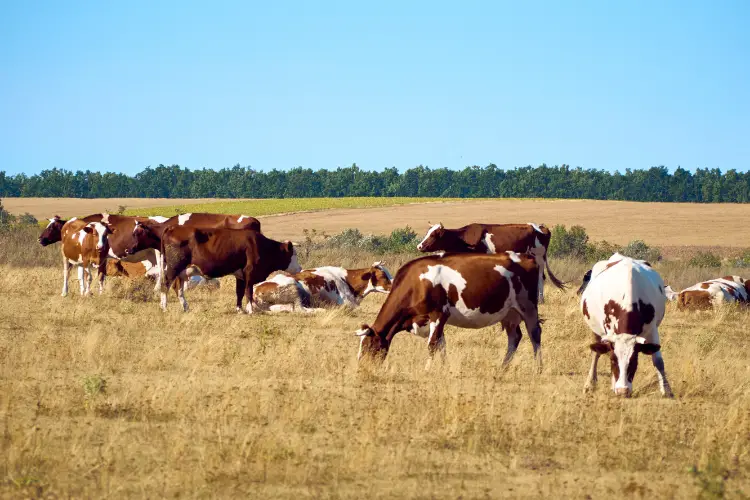
Feeding Strategies for Beef Cattle
The feeding strategy for beef cattle often involves a combination of forages and concentrates, with the proportions varying depending on the production stage and goals. Here are some common feeding strategies:
Forage-based Diets
For beef cattle in the growing, breeding, or maintenance stages, a forage-based diet is typically recommended. This diet consists primarily of pasture, hay, and silage, with limited supplementation of concentrates. The ratio of forage to concentrate can vary, but forages should make up the majority of the diet.
Backgrounding and Stocker Programs
In backgrounding and stocker programs, cattle are fed a high-forage diet to achieve moderate growth rates before entering the finishing phase. This approach allows for efficient use of forages and can be cost-effective.
Finishing Diets
During the finishing phase, when cattle are prepared for slaughter, the diet typically shifts to a higher proportion of concentrates to promote rapid weight gain and efficient feed conversion. Common finishing diets consist of a mix of grains (such as corn or barley), protein sources (like distillers’ grains or soybean meal), and a small amount of forage for fiber.
Limit-feeding
In some situations, particularly when feed resources are scarce or expensive, cattle may be limit-fed. This approach involves providing a controlled amount of a highly concentrated diet, ensuring that the cattle’s nutritional requirements are met while minimizing feed waste and costs.
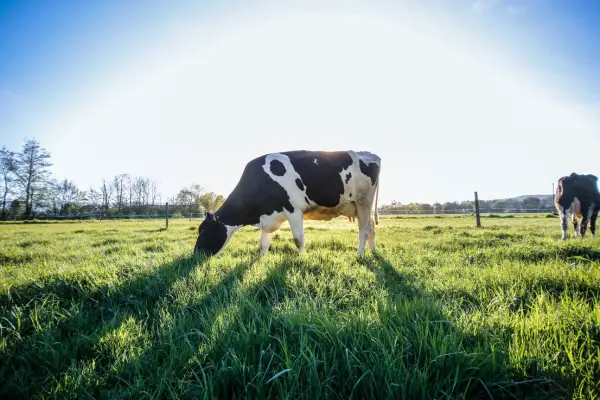
Best Practices for Feeding Beef Cattle
To ensure optimal cattle health, performance, and efficiency, it’s essential to follow these best practices when feeding beef cattle:
- Provide a balanced ration: Ensure that the diet meets the specific nutritional requirements for the cattle’s life stage and production goals, including energy, protein, fiber, minerals, and vitamins.
- Gradual dietary changes: When transitioning to a new feed source or ration, introduce the changes gradually to allow the rumen microbes to adapt and prevent digestive disturbances.
- Clean and fresh water: Access to clean, fresh water is crucial for cattle health and should be readily available at all times.
- Feed quality control: Regularly monitor the quality of feed sources, including nutrient content, moisture levels, and the presence of mold, mycotoxins, or other contaminants.
- Proper storage and handling: Store feed in a dry, clean environment to prevent spoilage and contamination, and handle it carefully to minimize waste and maintain quality.
- Consult with a nutritionist: Work with a qualified nutritionist or livestock specialist to develop a tailored feeding program that meets the specific needs of your cattle herd and production goals.
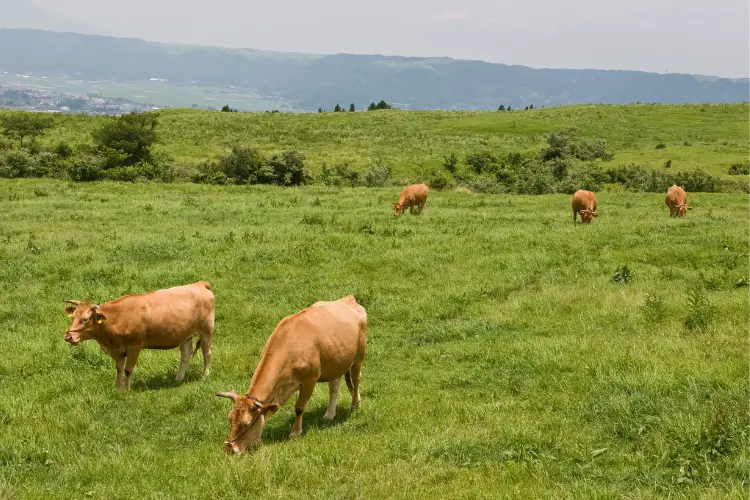
Comparing Common Cattle Feed Options
To help you make an informed decision, here’s a table comparing some common cattle feed options based on their nutrient composition and suitability for different production stages:
| Feed Source | Crude Protein (%) | Total Digestible Nutrients (TDN) (%) | Suitable for |
|---|---|---|---|
| Alfalfa Hay | 15-22% | 55-65% | Growing, breeding, lactating cattle |
| Grass Hay | 6-12% | 50-58% | Mature cattle, maintenance diets |
| Corn Silage | 7-9% | 65-75% | Growing, finishing cattle |
| Corn Grain | 8-10% | 85-90% | Finishing cattle, high energy needs |
| Soybean Meal | 44-49% | 80-84% | Protein supplement for all stages |
| Distillers’ Grains | 25-30% | 80-90% | Protein and energy source for finishing cattle |
| Cottonseed Meal | 41-45% | 70-75% | Protein supplement for all stages |
It’s important to note that the nutrient composition of feed sources can vary depending on factors such as growing conditions, processing methods, and storage conditions. Therefore, it’s recommended to have your specific feed sources analyzed for accurate nutrient values and consult with a livestock nutritionist to formulate the most appropriate ration for your cattle.
Conclusion
Selecting the best food to feed beef cattle is a crucial decision that can significantly impact their health, growth, and overall productivity. By understanding the principles of cattle nutrition, considering factors such as life stage, production goals, and feed availability, and implementing best practices for feeding, you can ensure that your cattle receive a balanced and nutrient-rich diet.
While there is no one-size-fits-all solution, a combination of high-quality forages and strategic use of concentrates is often the most effective approach. Forage-based diets are ideal for growing, breeding, and maintenance stages, while finishing diets may incorporate a higher proportion of concentrates to promote rapid weight gain.
Remember, the key to successful cattle feeding lies in providing a balanced ration tailored to your cattle’s specific needs, monitoring feed quality, and making gradual dietary changes when necessary. By working closely with a livestock nutritionist and staying informed about the latest research and best practices, you can optimize your cattle’s performance and overall profitability.
Investing in high-quality feed sources and implementing proper feeding strategies not only benefits the cattle but also contributes to the long-term sustainability of your operation. Healthy, well-nourished cattle are more productive, have better reproductive performance, and are less susceptible to diseases, ultimately leading to better economic returns.
As the demand for high-quality beef continues to grow, prioritizing cattle nutrition and feeding practices becomes even more crucial. By embracing a holistic approach to cattle feeding and staying committed to providing the best possible diet for your herd, you can position yourself as a responsible and successful cattle producer in the ever-evolving livestock industry.

